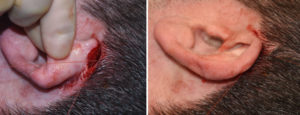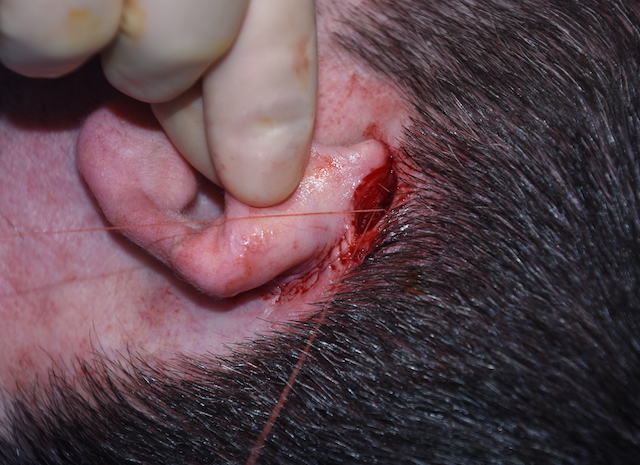Otoplasty is a generic term for ear reshaping of a variety of aesthetic deformities. In its most classic use it is a term specifically for setting back the protruding ear using different suture techniques of cartilage reshaping/repositioming done through a postauricular approach. It decreases the auriculoephalic angle by creating a more defined anti helical fold, decreasing the size/position of the conchal bowl or a combination of both.
While such otoplasty techniques can be very effective, they can not treat all aspects of the protruding ear or achieve them to the degree that some patients want. One of these circumstances is in the male patient who wants the top of the ear as close to the side of the head as possible. While this is typically seen in my experience in the completely bald or shaved head patient this is not always so. It can also present in the male who has a more narrow side of the head where even a normal top of the ear position can make it look too wide.

For those patients who want their ears maximally repositioned against the side of the head, postauricular sulcus reduction is the technique that enables it to be done with causing other ear distortions.
Dr. Barry Eppley
Indianapolis, Indiana




